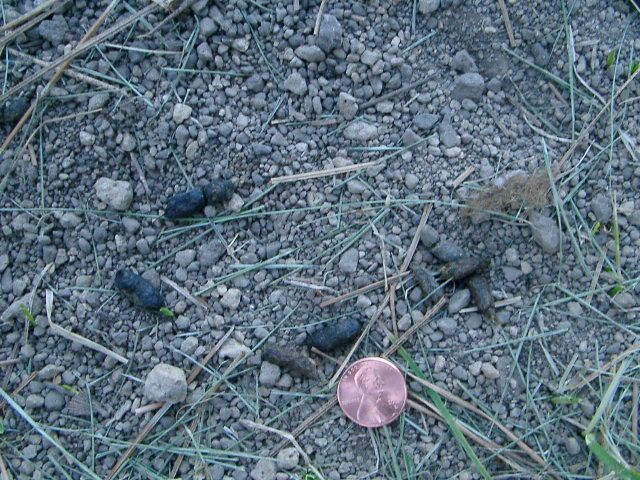While tree squirrels are more common in the Cascades and much of the Willamette valley, we do have several species of ground squirrel in the area. Like their arboral cousins, ground squirrels are active during the day time and can easily be observed. See below for photos of various species, tracks, burrows, and scat. Ground squirrels feed on grasses, forbs, mushrooms, and insects. Although vegetarian, occasionally they will feed on carrion.
The California ground squirrel (Spermophilus beecheyi) is common through much of northern California and western Oregon. I found this one along the waterfront in Depoe Bay, Oregon.
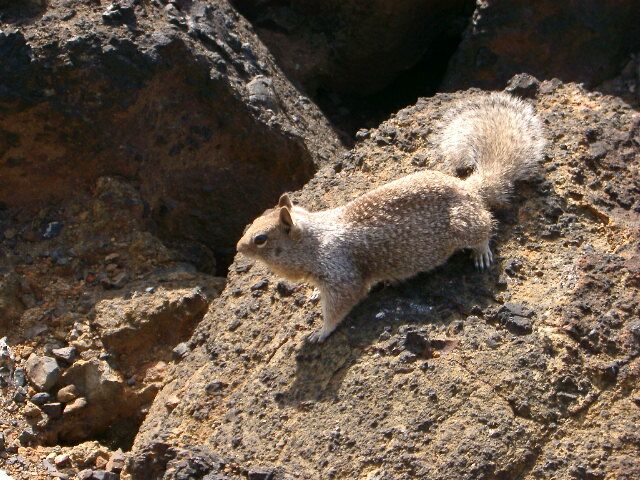
The Belding ground squirrel (Spermophilus beldingi) is common in eastern Oregon. The photo below was taken near Klamath Falls in an area where I have observed many squirrel predators: coyote, badger, and various hawks and owls.
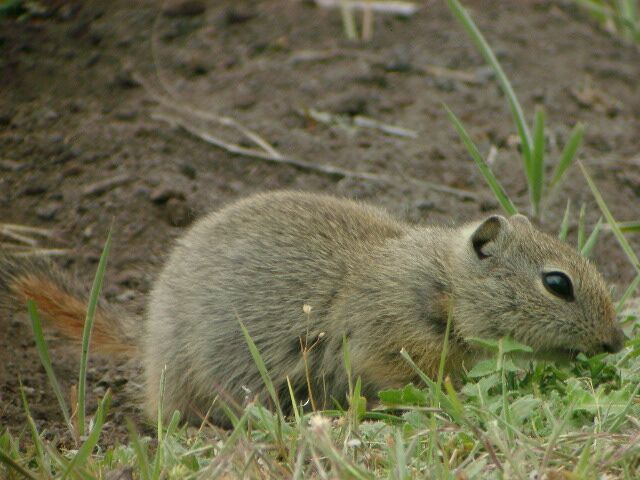
The Golden Mantle ground squirrel (Spermophilus lateralis) is found in open forest land with an abundance of rocks and logs throughout much of the West. It is often confused with chipmunks but the body is larger, the tail is shorter, and the stripes do not extend up to the head. A similar species (Spermophilus saturatus) found in the Cascade range of Washington has duller markings.
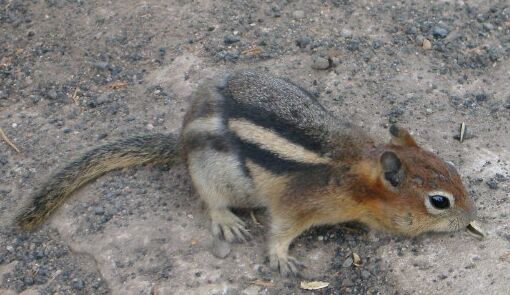
The Uinta ground squirrel (Spermophilus)is common in Yellowstone National Park. Pioneers called them "picket pins" after the erect posture assumed when alert for predators.
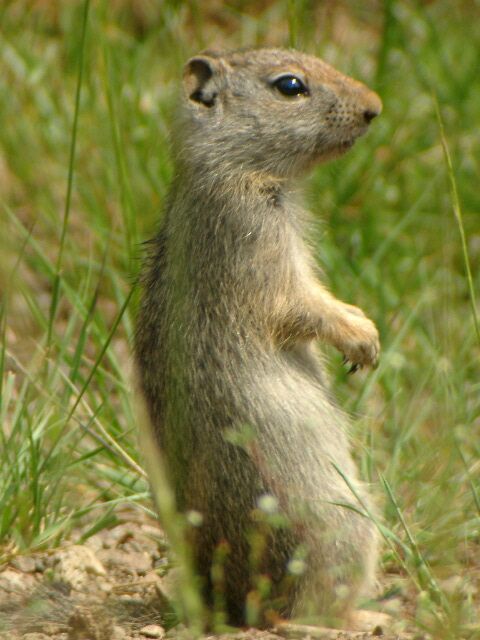
The following table lists the common species found in the western states and summarizes their habitat and distribution.
| Species | Habitat | Range |
| California (Spermophilus beecheyi ) |
Variety of habitats | West of Cascades in CA, OR, and southern WA |
| Belding's (Spermophilus beldingi) |
Meadows, sagebrush flats, pastures | Eastern OR, CA, ID |
| Columbia (Spermophilus columbianus ) |
Meadows in forested areas (esp. grand fir, ponderosa pine, subalpine fir | Eastern OR and WA, northern ID, western MT |
| Uinta (Spermophilus armatus ) |
Grasslands, sagebrush, and mountain meadows to 11,000 feet | Greater Yellowstone ecosystem (WY, MT, ID) |
| Wyoming (Spermophilus elegans ) |
Meadows, sometimes sagebrush and bottomlands | southern ID and WY; northern NV, UT, and CO |
| Golden-mantled (Spermophilus lateralis ) |
Open timber with abundance of rocks and logs | Northern CA, eastern OR, Rocky Mountains |
| Cascades Golden-mantled (Spermophilus saturatus ) |
Talus slopes up to 7500 ft | Cascades of WA and British Columbia |
| White-tailed antelope (Ammospermophilus leucurus ) |
Deserts, valley bottoms, washes, sagebrush flats | Southeasern Oregon, California, east to Colorado |
Ground squirrel tracks closely resemble that of tree squirrels but the front feet tend to land at a diagonal rather than side by side. They hibernate in winter so tracks in snow are uncommon.
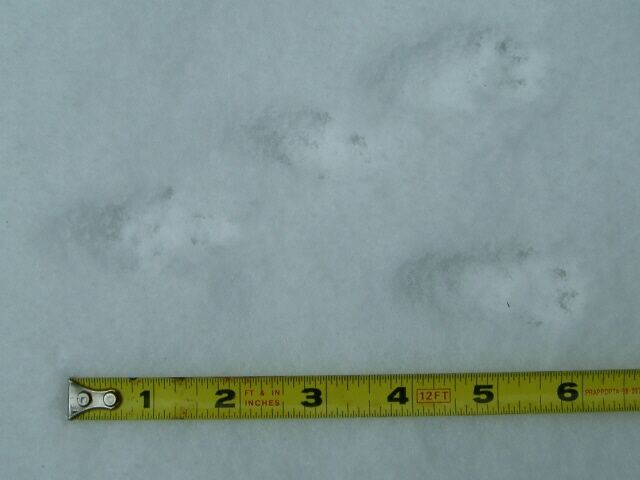
White-tailed antelope ground squirrel, Grand Canyon.

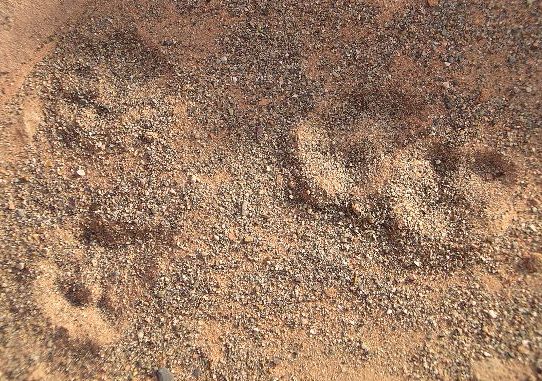
The burrows of various species are similar in size (about 3-4" wide) but vary somewhat in general characteristics. Townsend's, Columbian, Merriam's, Piute, Washington, California, and Belding's are colonial. Golden-mantled and Antelope squirrel burrows lack spoil piles at the entrance. California, Golden-mantled, and Uinta tend to use rocks, roots, logs, or other natural features.
California ground squirrel burrow.
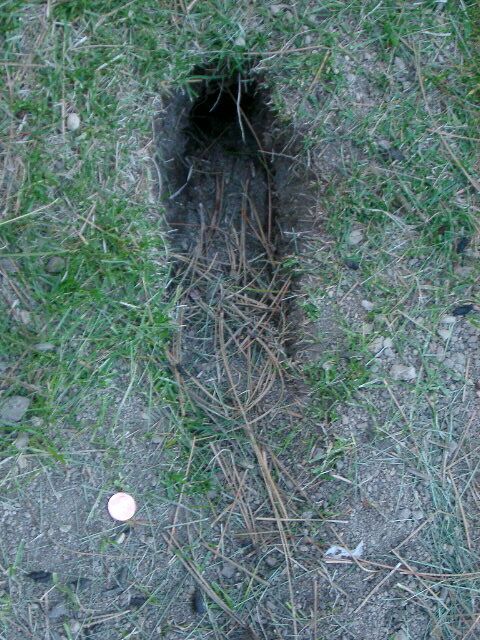

Uinta ground squirrel burrow.
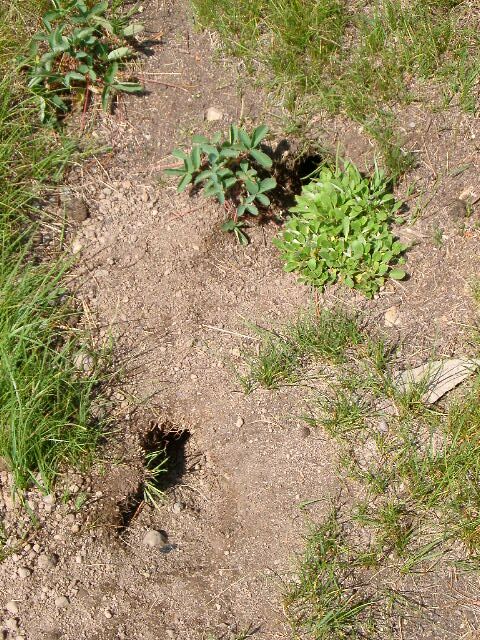
California ground squirrel scat.
